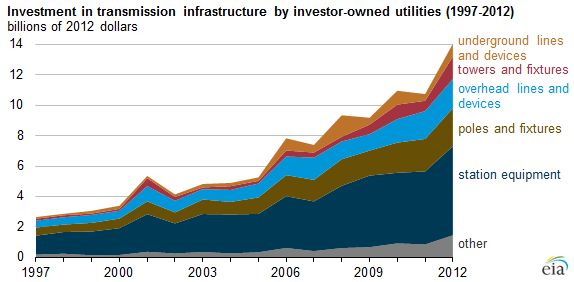Retail electricity prices rose just over 3 percent in 2014, the largest increase since 2008.
The increases were variable across the U.S., according to data from the U.S. Energy Information Administration. The West Coast saw nearly stagnant prices for residential power, while electricity costs jumped nearly 10 percent in New England.

The jump in the Northeast was due to higher wholesale prices, mostly during the polar vortex early in 2014. But it’s not just extreme weather events that are driving prices.
Electricity transmission investment has jumped from less than $3 billion in 1997 to more than $14 billion in 2012, reversing a three-decade decline, according to EIA.
Despite volatility in wholesale markets and billions of dollars in upgrades to the grid, the price most homeowners pay is likely going to stay relatively flat in coming years, according to EIA, rising only about 1 percent for 2015.
The average American paid about $0.125 per kilowatt-hour in 2014, far below the relative cost of electricity in 1960, which was about $0.03 in 1960 dollars, but over $0.20 in 2014 dollars.

The success of wholesale markets means that some of the upgrades to the grid should be offset by lower power generation fuel costs. Energy efficiency requirements in many states are also driving lower energy usage. Next year could bring lower growth than this year; the EIA has forecasted electricity generation will increase by just 0.6 percent in 2016.



